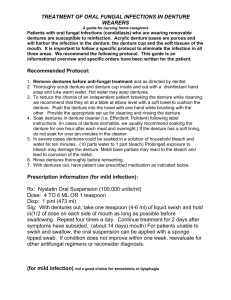1 Education of Patient
advertisement
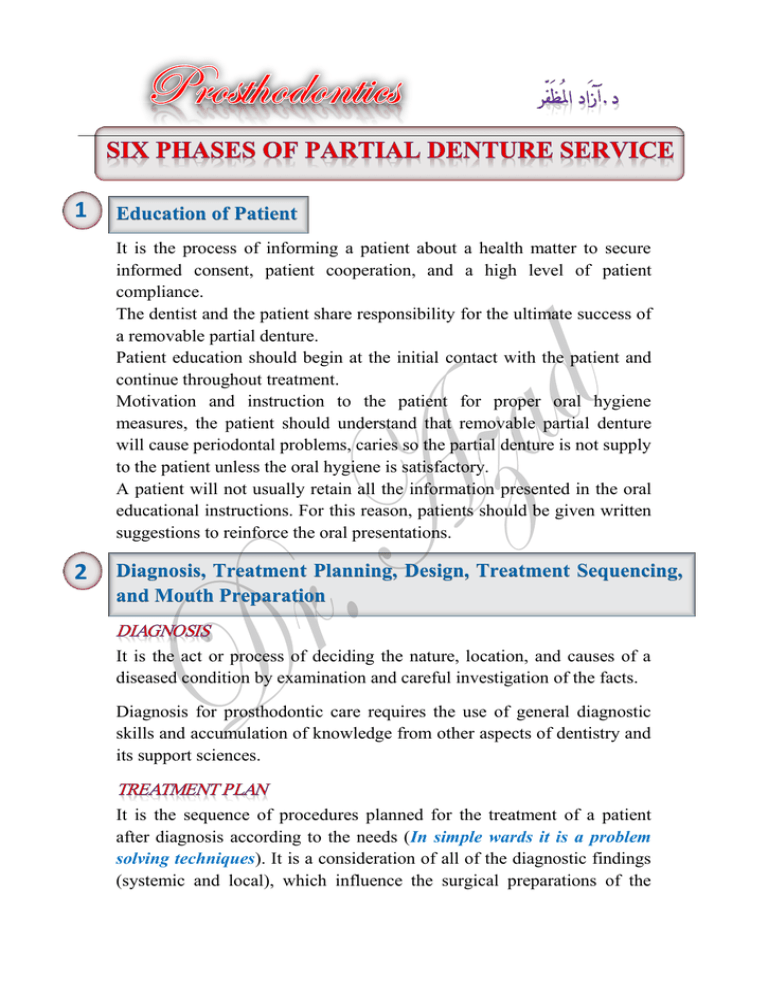
1 Education of Patient It is the process of informing a patient about a health matter to secure informed consent, patient cooperation, and a high level of patient compliance. The dentist and the patient share responsibility for the ultimate success of a removable partial denture. Patient education should begin at the initial contact with the patient and continue throughout treatment. Motivation and instruction to the patient for proper oral hygiene measures, the patient should understand that removable partial denture will cause periodontal problems, caries so the partial denture is not supply to the patient unless the oral hygiene is satisfactory. A patient will not usually retain all the information presented in the oral educational instructions. For this reason, patients should be given written suggestions to reinforce the oral presentations. 2 Diagnosis, Treatment Planning, Design, Treatment Sequencing, and Mouth Preparation It is the act or process of deciding the nature, location, and causes of a diseased condition by examination and careful investigation of the facts. Diagnosis for prosthodontic care requires the use of general diagnostic skills and accumulation of knowledge from other aspects of dentistry and its support sciences. It is the sequence of procedures planned for the treatment of a patient after diagnosis according to the needs (In simple wards it is a problem solving techniques). It is a consideration of all of the diagnostic findings (systemic and local), which influence the surgical preparations of the mouth, impression making, maxillomandibular relation records, occlusion to be developed, form and material of the teeth, the denture base material, and instructions in the use and care of dentures. It is matching the possible treatment options with patient needs and symmetrically arranging the treatment in order of priority but in keeping with logical or technically necessary sequences. The process requires a broad knowledge of treatment possibilities and detailed knowledge of patient needs and wants determined by careful diagnosis. It involves careful analysis of the problem, breaking to components, as possible; generating a list of possible components solutions are implemented. The four categories of mouth preparation are Periodontal preparation. Tissue conditioning. Abutment teeth preparation. Oral surgical preparation. 3 Support for Distal Extension Denture Bases FACTORS INFLUENCING THE SUPPORT OF DISTAL EXTENSION BASE Contour and quality of the residual ridge. Extent of residual ridge coverage by the denture base. Type and accuracy of the impression registration. Accuracy of the fit of the denture base. Design of the removable partial denture framework. Total occlusal load applied. 4 Establishment and Verification of Occlusal Relations and Tooth Arrangements Analysis of the existing occlusion. Correction of existing occlusal disharmony. Recording of centric relation. Recording of eccentric jaw relations. Correction of occlusal discrepancies that created in processing the denture. Methods for establishing occlusal relationships Direct opposition of casts. Interocclusal records with posterior teeth remaining. Occlusal relations using occlusion rims on record bases. Jaw relation records made entirely on occlusion rims. Establishing occlusion by the recording of occlusal pathways. 5 Initial Placement Procedures The fifth phase of treatment occurs when the patient is given possession of the removable prosthesis. It seems that minute changes in the planned occlusal relationships occur during processing of the dentures. Not only must occlusal harmony be ensured before the patient is given possession of the dentures, but also the processed bases must be reasonably perfected to fit the basal seats. It must also be ascertained that the patient understands the suggestions and recommendations given by the dentist for care of the dentures and oral structures and understands about expectations in the adjustment phases and use of the restorations. 6 Periodic Recall Periodic reevaluation of the patient is critical for early recognition of changes in the oral structures to allow steps to be taken to maintain oral health. These examinations must monitor: 1234- The condition of the oral tissue. The response to the tooth restorations, and the prosthesis. The patient's acceptance. The patient's commitment to maintain oral hygiene. Although a 6-month recall period is adequate for most patients, a more frequent evaluation may be required for some.
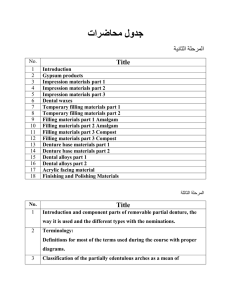
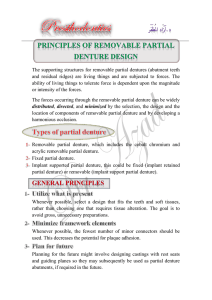
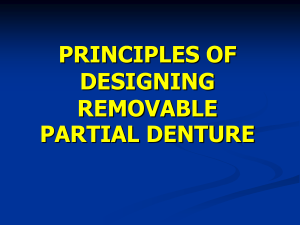
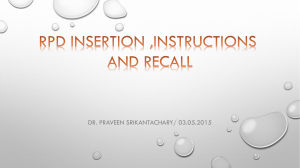
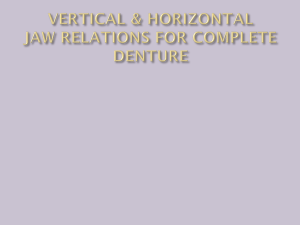
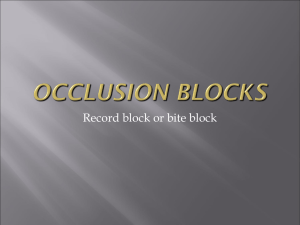
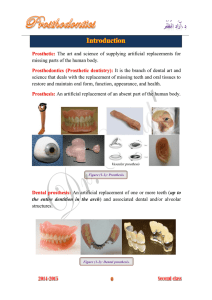
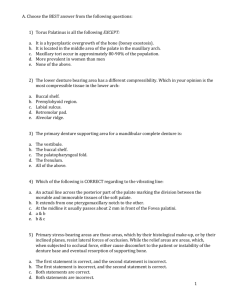
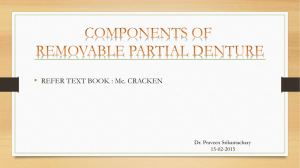
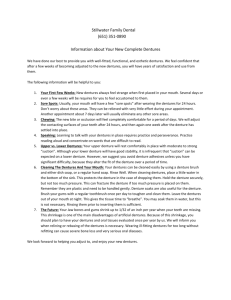
![introduction [ppt]](http://s2.studylib.net/store/data/010246435_1-1af68ba70284a99754c8448728f5e3e9-300x300.png)
